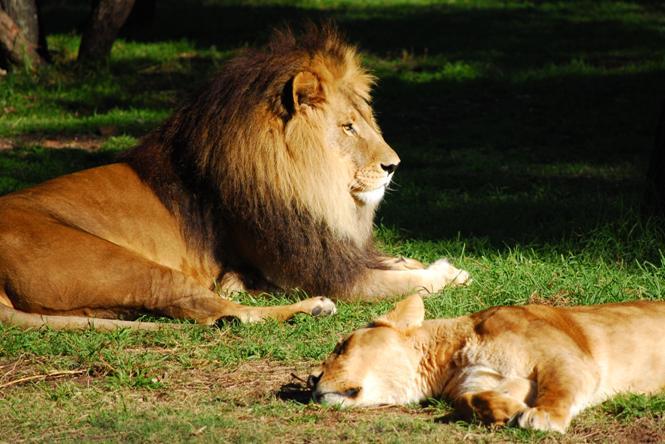
Structure of Revelation -- A Preview
Part 4 -- Two Judgement Scenes (19:11 -- 21:8)

Structure of Revelation -- A Preview
Part 4
By Graham Dull

Two Judgement Scenes (19:11 -- 21:8)
Two Judgement Scenes form a Transitional Section which occupy Revelation 19:11 to 21:8.
They form a significant Structural Transition. They fit between the 'Carried me away in the Spirit' Section regarding Babylon, and the 'Carried me away in the Spirit' Section regarding Jerusalem. It is a transition from one to the other. It is a transition from Babylon built under the guidance and encouragement of Satan -- and the New Jerusalem created by God. The judgements destroy that which is wicked -- and eternally establish all that is righteous and pure.
The two judgement scenes conclude the judgement on Babylon, and prepare the way for God's Holy City which is without any trace of sin.
Parallel 19:11/20:11
They are introduced by the 'Parallel 19:11/20:11.'
19:11
I saw heaven standing open and there before me was a white horse, whose rider is called Faithful and True.
20:11
Then I saw a great white throne and him who was seated on it. The earth and the heavens fled from his presence, and there was no place for them.
In the first judgement there was a 'white' horse, in the second a 'white' throne. White is significant in Revelation -- it relates to God, to purity, righteousness, and judgement.
There is another judgement scene in Revelation which corresponds also in this respect. It occurs in 14:14 and it describes "a white cloud, and seated on the cloud was one like a son of man."
In each of these passages, there is someone seated on something 'white' -- seated on a white horse, seated on a white throne, seated on a white cloud.
Three judgement scenes --
19:11
white horse
20:11
white throne
14:14
white cloud
The two scenes that are relevant to the Transitional Judgement Section begin at 19:11 and 20:11.

Judgement on Babylon (White Horse 19:11 -- 20:10)

The 'White Horse' judgement scene begins with 19:11. This judgement relates directly and specifically to the First 'Carried me away in the Spirit' Section concerning Babylon which it immediately follows.
The two sections share common themes.
It is all about judgement.
Revelation 17:1 pronounces judgement on the great prostitute. This pronouncement comes at the very beginning of the First 'Carried me away in the Spirit' Section.
Revelation 17:1
One of the seven angels who had the seven bowls came and said to me, "Come, I will show you the punishment of the great prostitute..."
The 'White Horse' judgement begins with 'the rider on the white horse' carrying out this judgement.
Revelation 19:11
I saw heaven standing open and there before me was a white horse, whose rider is called Faithful and True. With justice he judges and makes war.
A significant battle takes place. The rider on the white horse conquers. It is with justice that he judges.
Further significant and climactic events are recorded in Revelation 19:20. The pronouncement is made that the beast and the false prophet were captured and both of them were thrown into the fiery lake of burning sulphur.
Likewise the devil was thrown into the lake of burning sulphur (20:10).
Revelation 19:11
But the beast was captured, and with him the false prophet who had performed the miraculous signs on his behalf. With these signs he had deluded those who had received the mark of the beast and worshiped his image. The two of them were thrown alive into the fiery lake of burning sulphur.
Revelation 20:10
And the devil, who deceived them, was thrown into the lake of burning sulphur, where the beast and the false prophet had been thrown.
This judgement destroys the Devil and all his agents.
Following their defeat by 'the rider on the white horse,' this confederacy of the devil, the beast, and the false prophet cease to exist. They are not heard of again.
This judgement occurs within the section labelled the 'White Horse' Judgement.

Judgement of Individuals (White Throne 20:11-21:8)

Revelation 20:11
Then I saw a great white throne and him who was seated on it. Earth and sky fled from his presence, and there was no place for them.
God is seen seated on his throne. And the dead are judged (v 12).
In contrast to the 'White Horse' judgement wherein Satan and his agencies are destroyed, the 'White Throne' judgement relates solely to mankind and determines who may be counted worthy to enter the everlasting Kingdom of God. Revelation 20:12, 13 describes this judgement.
Revelation 20:12, 13
The dead were judged according to what they had done... 13... each person was judged according to what he had done.
Verse 15 gives further detail.
Revelation 20:15
If anyone's name was not found written in the book of life, he was thrown into the lake of fire.
For mankind, there are two possible outcomes -- to enter the kingdom of God, or receive the same fate as the Devil had received as recounted in the 'White Horse' judgement.
The 'White Throne' judgement defines the judgement of mankind, and it determines who shall enter the Kingdom of God.
The 'White Throne' judgement therefore belongs to the Second 'Carried me away in the Spirit' Section (Revelation 21:9 to 22:11), which section defines God's perfectly pure and eternal kingdom.

The 'White Horse/White Throne' judgements (Concluding Parallel 20:10/21:8)

A Parallel ends the Judgement Sections.
The 'White Horse' Judgement Section concludes with these words.
Revelation 20:10
And the devil, who deceived them, was thrown into the lake of burning sulphur, where the beast and the false prophet had been thrown. They will be tormented day and night for ever and ever.
The devil, the beast, and the false prophet are thrown into the 'lake of burning sulphur.' That is the only option available to them.
The 'White Throne' Judgement Section concludes with these words.
Revelation 21:7, 8
He who overcomes will inherit all this, and I will be his God and he will be my son.
But the cowardly, the unbelieving, the vile, the murderers, the sexually immoral, those who practice magic arts, the idolaters and all liars-their place will be in the fiery lake of burning sulphur. This is the second death.
There are two options available to mankind -- (1) to inherit God's kingdom, or (2) to go into the 'lake of burning sulphur' along with the devil.

Summary

Section Summary
The 'White Horse' judgement focuses on the judgement of the beast, the false prophet, and the devil, along with a massive hoard of followers.
The 'White Throne' judgement focuses on the judgement of mankind as individual and separate people, as to whether or not a person's very own name is written in the 'book of life.' Those found worthy will share in the inheritance of God (21:7).
Overall Summary
So far throughout this article I have identified many of the Parallels which define the structure of Revelation. Parallels introduce (define the start of) the Prologue and Epilogue -- the four 'In the Spirit'/'Carried me away in the Spirit' Parallel Sections -- and the two Transitional Judgement Sections identified as the 'White Horse' and 'White Throne' Judgements. Each are introduced by parallels.
Parallels also conclude (mark the close of) many Sections.
It is through these parallels that we discern the structure of the book. If we do not recognise them, the narrative is thrown into confusion.

.

